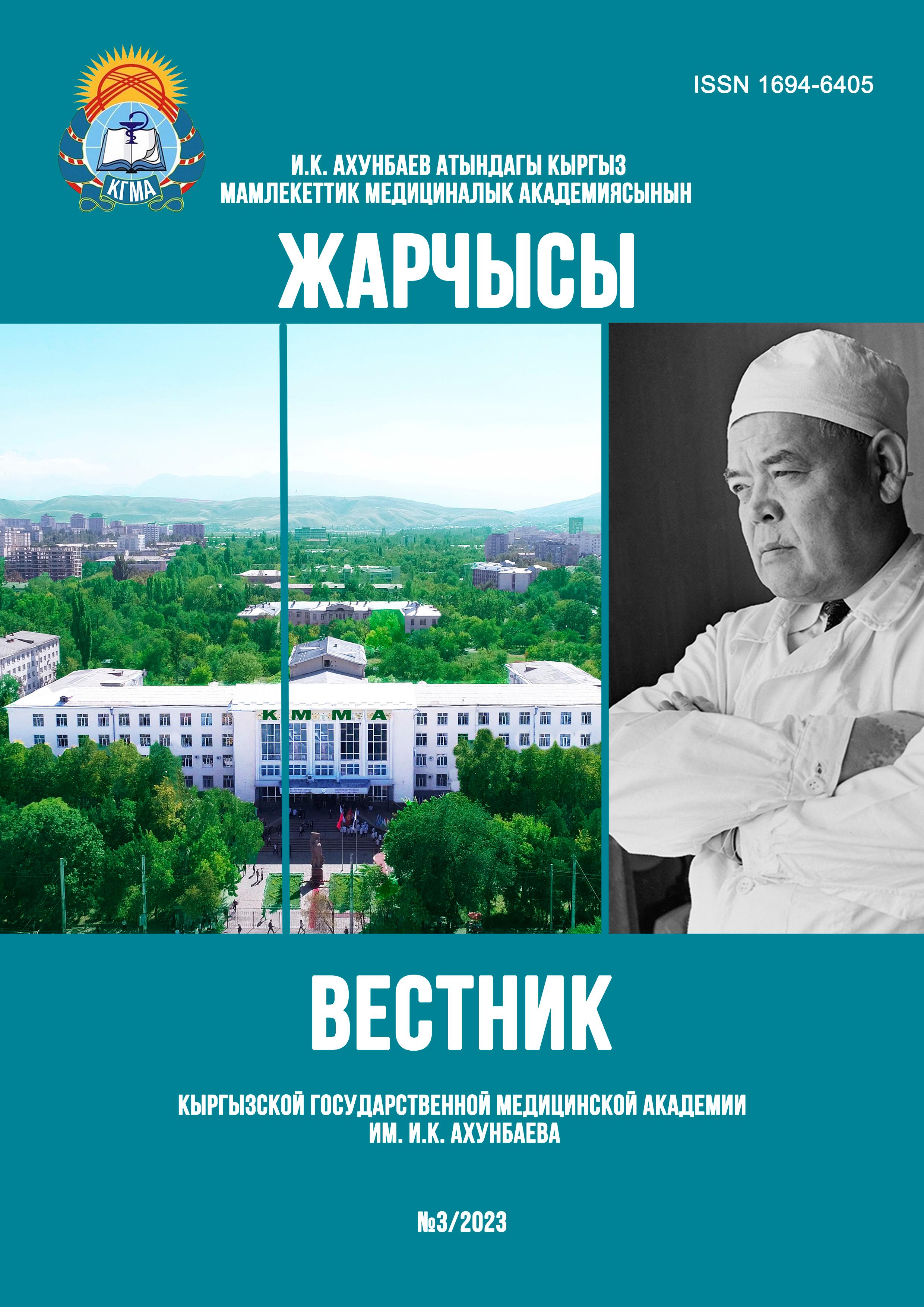RESULTS OF USING MINIMALLY INVASIVE SURGERY IN PATIENTS WITH PROSTATE CANCER
DOI:
https://doi.org/10.54890/1694-6405_2023_3_79Abstract
Currently, the relevance of the disease in oncourology – prostate cancer remains. At the same time, the survival outcomes of patients undergoing transurethral resection are different. It should be noted that in local scientific publications there are no works aimed at analyzing the results of treatment and survival. The aim of the study was to study the results of transurethral resection in patients with prostate cancer. The scientific work is based on a retrospective analysis of case histories of 50 elderly patients (According to the age classification of the World Health Organization) who were in the urology dapartments of the National Hospital under the Ministry of Health of the Kyrgyz Republic. The diagnoses were verified on the basis of transrectal multifocal prostate biopsies. The persistence of dysuric phenomena despite neoadjuvant therapy, as well as objective and subjective signs of infravesical obstruction, were indications for transurethral resection of the prostate. All patients included in the study were carefully interviewed, anamnestic data were collected and, if necessary, additional consultations were held with the relevant specialists in order to correct and treat comorbidies, as well as prepare for surgical treatment and anesthesia. General analysis of blood and urine, coagulogram, biochemical blood tests, markers of viral hepatitis A,B,C, Wasserman reaction, total protein and other analyzes were the basis of laboratory studies.
Keywords:
prostate cancer, transurethral resection, survival, prostate biopsy. Prostate specific antigen, ultrasonography, neoadjuvant therapy, infravesical obstruction.References
1. Усупбаев А.Ч., Кылычбеков М.Б., Курманбеков Н.К., Исаев Н.А., Акылбек С., Джапаров Ж.Т. и др. Результаты трансректальной мультифокальной биопсии предстательной железы. Вестник КГМА им. И.К. Ахунбаева. 2017;3:94-96.
2. С.В. Головачев С.В., Макимбетов Э.К. Лучевая терапия при раке предстательной железы. Вестник КРСУ. 2017;17(7):18-21.
3. Имянитов Е.Н. Эпидемиология и биология рака простаты Практическая онкология.2008;9(2):58.
4. European Association of Urology. Guiglines. 2016:11. Available from: http://www.singem.it/wp-content/uploads/2018/03/2016_EAU_Extended-Guidelines.pdf.
5. Ишкинин Е.И., Жалкайдарова А.Ж., Нургалиев Н.С. Предварительные результаты проведения скрининга рака предстательной железы восточно-Казахстанской области в 2012 году. Сибирский онкологический журнал. 2013;1:45-46.
6. Шодмонова З.Р. Рак предстательной железы. Учебно-методическое пособие для студентов медицинских высших образовательных учреждений, резидентов магистратуры, клинических ординаторов и врачей-урологов. Самарканд; 2015.
7. Русаков И.Г., Калпинский А.С. Неотложные состояния в онкоурологической практике. Практическая онкология. 2006;7(2):89-93.
8. Fleishmann JD, Catalona WJ. Endocrine therapy for bladder outlet obstruction from carcinoma of the prostate. J Urol. 1985;134(3):498-500.
9. Попков В.М., Ким Т.Д. Лечение больных с местно-распространенным и диссеминированным раком предстательной железы (обзор). Урология. 2014. Режим доступа: https://medconfer.com/node/3311







